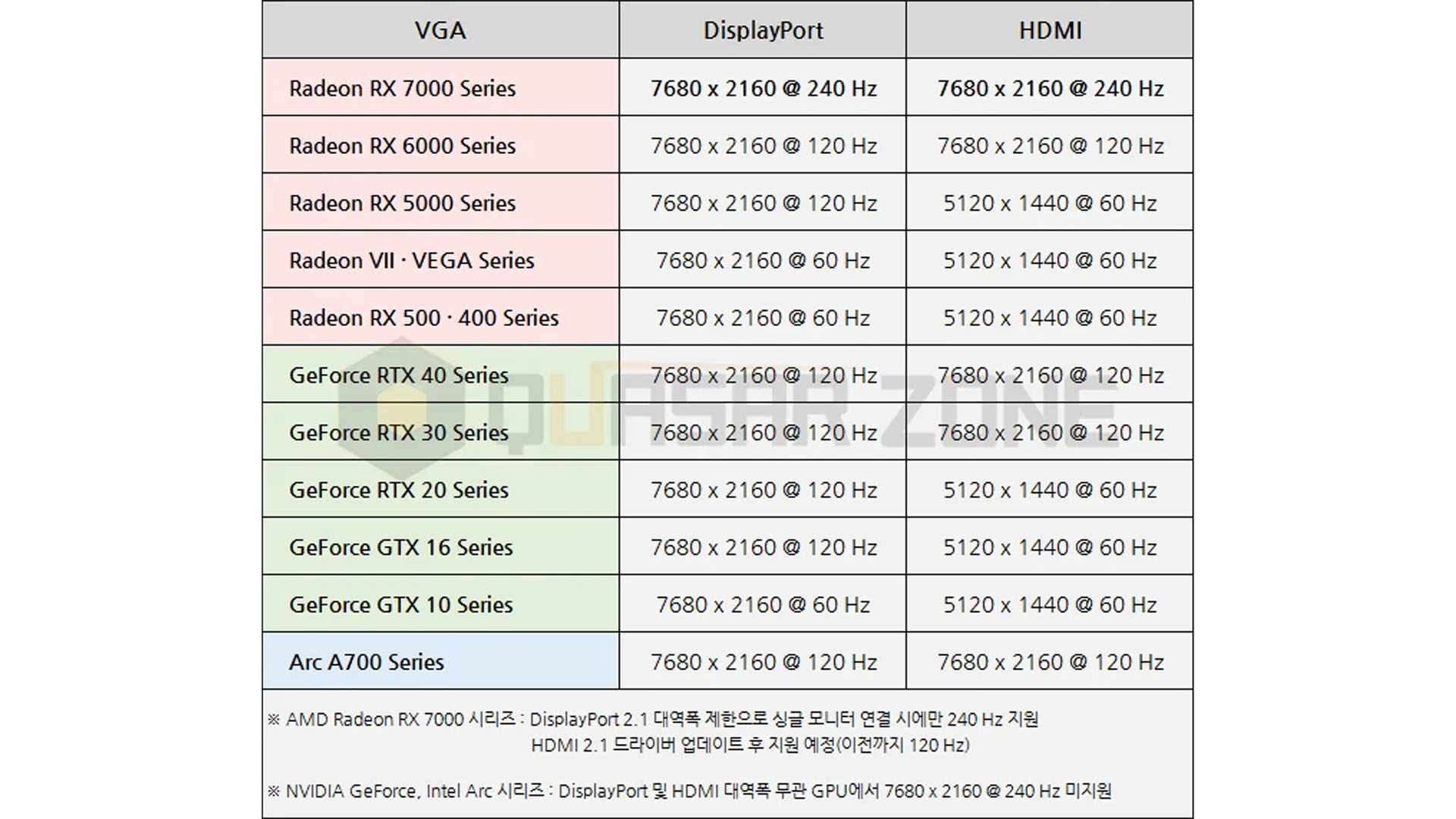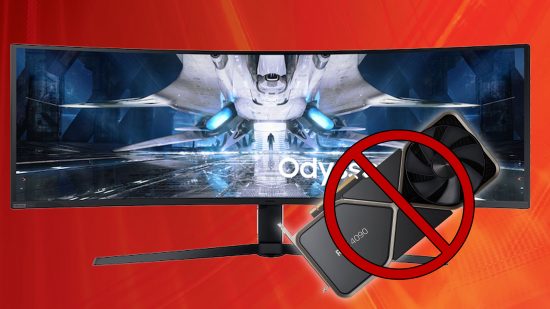It has been confirmed that Samsung’s new gargantuan gaming monitor, the Odyssey Neo G9, can only be run at full whack when using AMD Radeon RX 7000 GPUs. The combination of the 7,680 x 2,160 (that’s 2x 4k) resolution with a 240Hz refresh rate is simply too much to run on any other cards right now. The Samsung Odyssey Neo G9 Nvidia graphics card problem means even owners of the fastest graphics card in the world – the RTX 4090 – can’t use this new display to its full potential.
The issue, which was tested and confirmed by a South Korean review site, QuaserZone, confirms that the DisplayPort 2.1 port of the monitor is the only one fast enough to provide the bandwidth for passing such a high resolution to the display at such a fast refresh rate. However, while the latest AMD Radeon RX 7000 GPUs have DisplayPort 2.1 support, no other cards do.
Just about every AMD and Nvidia card from the last several generations and the new Intel Arc GPUs can support the display at 7,680 x 2,160 @ 120Hz – which will no doubt be sufficient for most users – but it’s only the likes of the RX 7900 XTX and RX 7800 XT that will hit the 7,680 x 2,160 @ 240Hz limit of the display. Of course, there are very few games that will be playable at those settings, given how much graphics processing power will be required to render any game at 7,680 x 2,160, but in theory, it would be possible on those cards.

Even more intriguingly, the latest Nvidia RTX 4000 GPUs also don’t support the full capabilities of this display when using HDMI 2.1, which the cards and display do support. Rather than a standards limitations, this appears to be a limitation on the overall Display Stream Compression (DSC) bandwidth capabilities of Nvidia’s architecture.
DSC is used to compress video for transmission over display cables, allowing for just the sort of higher resolutions and refresh rates being talked about here. It’s a lossless algorithm, so there’s no loss in detail when it’s used. However, the way the algorithm is implemented can vary from GPU to GPU, as it uses the GPUs display pipeline to perform the compression. One Redditor has speculated on the possible reasons, which you can read more about here.
The Samsung Odyssey Neo G9 is a huge 49-inch, curved gaming display with a 32:9 aspect ratio, DisplayHDR 1000 certification, and a 1000R curvature. It’s an astonishing spec list with an astronomical price to match: a cool $2,499.99.
Does the GPU limitation of the Samsung Odyssey Neo G9 seem like a concern to you? Or, is a $2.5k gaming monitor that can’t go above 120Hz at ludicrous resolution (not ludicrous speed, mind – that would be a serious limitation) not much to worry about? Let us know your thoughts on the Custom PC Facebook page, via Twitter, or join our Custom PC and Gaming Setup Facebook group and tap into the knowledge of our 420,000+ members.
